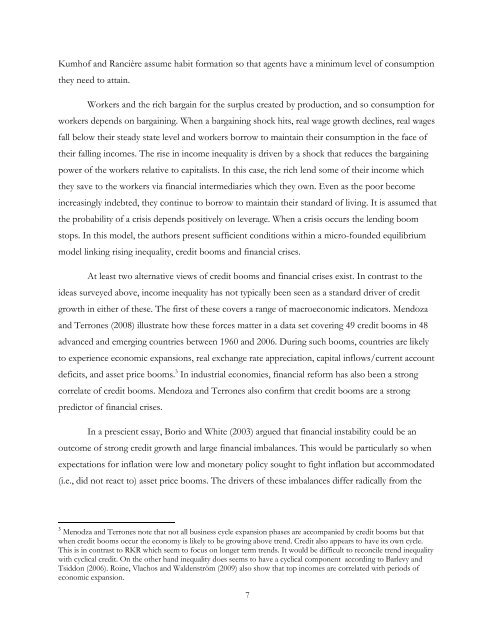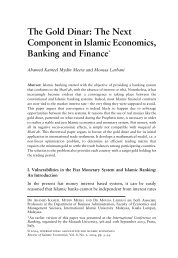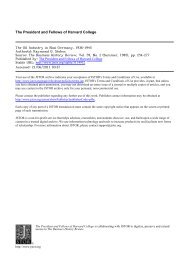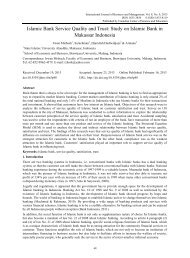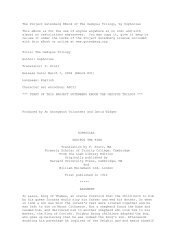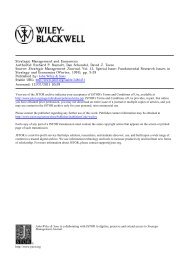Michael D. Bordo Christopher M. Meissner Working Paper 178
Michael D. Bordo Christopher M. Meissner Working Paper 178
Michael D. Bordo Christopher M. Meissner Working Paper 178
You also want an ePaper? Increase the reach of your titles
YUMPU automatically turns print PDFs into web optimized ePapers that Google loves.
Kumhof and Rancière assume habit formation so that agents have a minimum level of consumption<br />
they need to attain.<br />
Workers and the rich bargain for the surplus created by production, and so consumption for<br />
workers depends on bargaining. When a bargaining shock hits, real wage growth declines, real wages<br />
fall below their steady state level and workers borrow to maintain their consumption in the face of<br />
their falling incomes. The rise in income inequality is driven by a shock that reduces the bargaining<br />
power of the workers relative to capitalists. In this case, the rich lend some of their income which<br />
they save to the workers via financial intermediaries which they own. Even as the poor become<br />
increasingly indebted, they continue to borrow to maintain their standard of living. It is assumed that<br />
the probability of a crisis depends positively on leverage. When a crisis occurs the lending boom<br />
stops. In this model, the authors present sufficient conditions within a micro-founded equilibrium<br />
model linking rising inequality, credit booms and financial crises.<br />
At least two alternative views of credit booms and financial crises exist. In contrast to the<br />
ideas surveyed above, income inequality has not typically been seen as a standard driver of credit<br />
growth in either of these. The first of these covers a range of macroeconomic indicators. Mendoza<br />
and Terrones (2008) illustrate how these forces matter in a data set covering 49 credit booms in 48<br />
advanced and emerging countries between 1960 and 2006. During such booms, countries are likely<br />
to experience economic expansions, real exchange rate appreciation, capital inflows/current account<br />
deficits, and asset price booms. 3 In industrial economies, financial reform has also been a strong<br />
correlate of credit booms. Mendoza and Terrones also confirm that credit booms are a strong<br />
predictor of financial crises.<br />
In a prescient essay, Borio and White (2003) argued that financial instability could be an<br />
outcome of strong credit growth and large financial imbalances. This would be particularly so when<br />
expectations for inflation were low and monetary policy sought to fight inflation but accommodated<br />
(i.e., did not react to) asset price booms. The drivers of these imbalances differ radically from the<br />
3 Menodza and Terrones note that not all business cycle expansion phases are accompanied by credit booms but that<br />
when credit booms occur the economy is likely to be growing above trend. Credit also appears to have its own cycle.<br />
This is in contrast to RKR which seem to focus on longer term trends. It would be difficult to reconcile trend inequality<br />
with cyclical credit. On the other hand inequality does seems to have a cyclical component according to Barlevy and<br />
Tsiddon (2006). Roine, Vlachos and Waldenström (2009) also show that top incomes are correlated with periods of<br />
economic expansion.<br />
7


